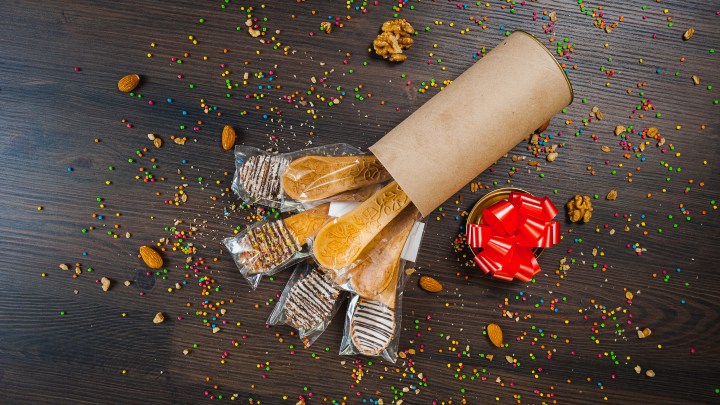
In 2022, you can clean your plate, then eat it

Eco-friendly products are a growing trend, and edible cutlery is on that list. According to Allied Market Research, the edible cutlery market is projected to grow at a compound annual rate of 11.1% between 2019 and 2026. Amazon has various products available for individual purchase, and there are even reviews and taste tests to divine which edible cutlery brand is at the top.
“Marketplace” host Kai Ryssdal spoke with Jennifer Kingson, chief correspondent for Axios What’s Next, about her article on edible cutlery. The following is an edited transcript of their conversation.
Kai Ryssdal: Describe for me the rabbit hole that you fell into that led you to write this piece.
Jennifer Kingson: I was reading a story in The New York Times about the top food trends for 2022. The one that caught my eye was Tasty Tableware. The Times reported that prices are coming down for edible chopsticks, forks, spoons, straws, so I started calling the companies that sell these to see what was going on with them.
Ryssdal: So, we’ll get to the price thing in a second because obviously cost is an issue here, but let me ask you this: First of all, have you tried these things?
Kingson: I tried some edible straws. They taste a little bit like fortune cookies, perhaps. Or wafers? The companies suggest creative pairings. You could have a black pepper spoon with your macaroni and cheese or your pasta.
Ryssdal: All right, OK. Well, you know, I will let the gourmands among our listeners figure that one out. But the reason I ask is because — for me, anyway — there’s a little bit of an ego factor that you have to get by, because I would worry about sogginess and just a texture thing. But there’s a very real business part of this thing, right? It’s not cheap. You have to get consumers to adopt it and, as of right now, there’s still a little bit, I gather, of an uphill climb.
Kingson: Absolutely, and you’re right on all these fronts. A few of these startup companies that are making this stuff have come and gone because they’re a lot more expensive than the plastic or conventional alternatives. You can buy a whole bunch of paper or plastic straws for pennies, whereas these cost maybe 20 or 30 cents apiece on a good day. Now, a whole bunch of places are adopting them. Carnival Cruise Line will put an edible straw in your drink, for example, and so forth. But either they are charging extra for them or they’re raising the prices of the products that they come in. That said, people are really interested in being sustainable, and one of the biggest marketing hooks for these products is that they are actually home compostable, which is the brass ring in this type of sustainability.
Ryssdal: Right, and there are, you know, varying levels of environmental awareness and sustainability consciousness among the consuming public, and people who are going to buy these things and do it at home will certainly do it the proper way. But if I’m on a, you know, Carnival Cruise Line, that’s not the first thing I’m thinking of. So if I don’t eat it, it goes into the landfill. Right?
Kingson: It probably does. One point that a lot of the manufacturers of these edible spoons, forks, straws, what have you, kept making to me is that things that we think are good — like paper straws — actually aren’t. If a paper straw is used for anything but water, then it can’t immediately be recycled without being rinsed. And in an era where governments and so forth are cutting back on single-use plastics, edible alternatives are seen as a kind of fun, niche product that people can use as a novelty and feel good about.
Ryssdal: Yeah, a novelty for now, but obviously it’s kind of the way of the future as we all try to be more sustainable. Jennifer Kingson, she is the chief [What’s Next] correspondent at Axios. Jennifer, thanks a bunch. I appreciate your time.
Kingson: Thanks, Kai. Now eat your vegetables and your plate, too.
Ryssdal: I will not. I’m not a vegetable guy. But anyway, that’s a whole different podcast. All right. Thank you, Jennifer. I appreciate it.
There’s a lot happening in the world. Through it all, Marketplace is here for you.
You rely on Marketplace to break down the world’s events and tell you how it affects you in a fact-based, approachable way. We rely on your financial support to keep making that possible.
Your donation today powers the independent journalism that you rely on. For just $5/month, you can help sustain Marketplace so we can keep reporting on the things that matter to you.

















